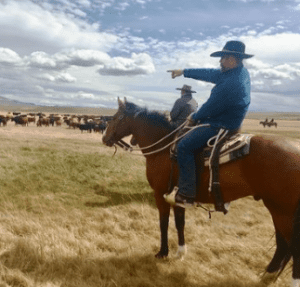Restoration
Access the bibliography.
This interactive map and database highlights aspen research as it relates to regions in primarily North America.
View fact sheet.
This study used historical and projected weather to predict changes in landscape composition and structure under two different climates, three restoration strategies, and two different fire management scenarios. They found that, without active restoration treatments, whitebark pine cannot survive. Management intervention actions such as planting rust-resistant seedlings and employing proactive restoration treatments, can return whitebark pine to some high mountain settings in western North America to create resilient upper subalpine forests for the future.
View webinar recording.
It is widely recognized that forest restoration needs to be scaled up to landscapes. This webinar described the findings from the project “Go big or Go Home?” in the eastern Cascades of Oregon. The goals of the project were to analyze how forest collaboratives and Forest Service managers can plan and manage at landscape scales, and determine how scientific research, participatory simulation modeling, and innovations in collaborative participation can contribute to the process.
Talk 1: Scott Hoffman Black, Executive Director, Xerces Society: Best Management Practices for Pollinators: Creating Practices that are Meaningful and Implementable for Rangelands
Talk 2: Jim Cane, Research Entomologist, USDA-ARS Pollinating Insect Research Unit: Calculated Floral Resource Withdrawal by Managed Honey Bees in Light of Native Bee Reproduction
Talk 1: Dave Waldien, Affiliated Scholar, Christopher Newport University: Management Considerations of Pollinating Bats on Wind and Solar Farms
Talk 2: Peter Beesley, Vegetation Program Manager, Expert – Pacific Gas and Electric Company: Utility Right-of-Way Management that Supports Pollinators and Safe Energy Transmission
Talk 1: Mary Rowland, Research Wildlife Biologist, U.S. Forest Service; and Sandy DeBano, Associate Professor – Invertebrate Ecology, Oregon State University: Native Bees and Large Mammals: Vertebrate – Invertebrate Interactions in Riparian Natural Areas
Talk 2: Thomas Kaye, Executive Director and Senior Ecologist at the Institute for Applied Ecology: Partnering with Pollinators: Prairie Restoration to Support Diverse Pollinating Insects
Access website.
Data, weather, and tools to provide timely and site-specific information about long-term patterns of weather and microsite variability for rangeland restoration planning and management.
Access article.
This study evaluated how targeted grazing treatments interacted with seed rate, spatial planting arrangement (mixtures vs. monoculture strips), seed coating technology, and species identity (five native grasses) to affect standing biomass and seeded plant density in experimental greenstrips.
View article.
Debate as to whether restoration is feasible is coupled to long-standing disputes regarding the definition of restoration, whether more-damaged lands are worthy of restoration efforts given limited financial resources, and ongoing conflicts as to whether the novel ecosystem concept is a help or a hindrance to restoration efforts. A willingness to consider restoration options that have promise, yet would have previously been regarded as ‘taboo’ based on the precautionary principle, is increasing. Functional restoration is becoming more prominent in the scientific literature, as evidenced by an increased emphasis on functional traits, as opposed to a simple inventory of vascular plant species. Biodiversity continues to be important, but an increasingly expansive array of provenance options that are less stringent than the traditional ‘local is best’ is now being considered. Increased appreciation for soil health, plant–soil feedbacks, biological crusts, and water quality is evident. In the United States, restoration projects are becoming increasingly motivated by or tied to remediation of major environmental problems or recovery of fauna that are either charismatic, for example, the monarch butterfly, or deliver key ecosystem services, for example, hymenopteran pollinators.
View article.
This project inventoried 97 projects implemented by 32 organizations, most in the last 10 years. We found that beaver-related stream restoration projects undertaken mostly involved the relocation of nuisance beavers. The most common goal was to store water, either with beaver dams or artificial structures. Beavers were often moved without regard to genetics, disease, or potential conflicts with nearby landowners. Few projects included post-implementation monitoring or planned for longer term issues, such as what happens when beavers abandon a site or when beaver dams or structures breach. Human dimensions were rarely considered and water rights and other issues were mostly unresolved or addressed through ad-hoc agreements. We conclude that the practice and implementation of beaver-related restoration has outpaced research on its efficacy and best practices. Further scientific research is necessary, especially research that informs the establishment of clear guidelines for best practices.


